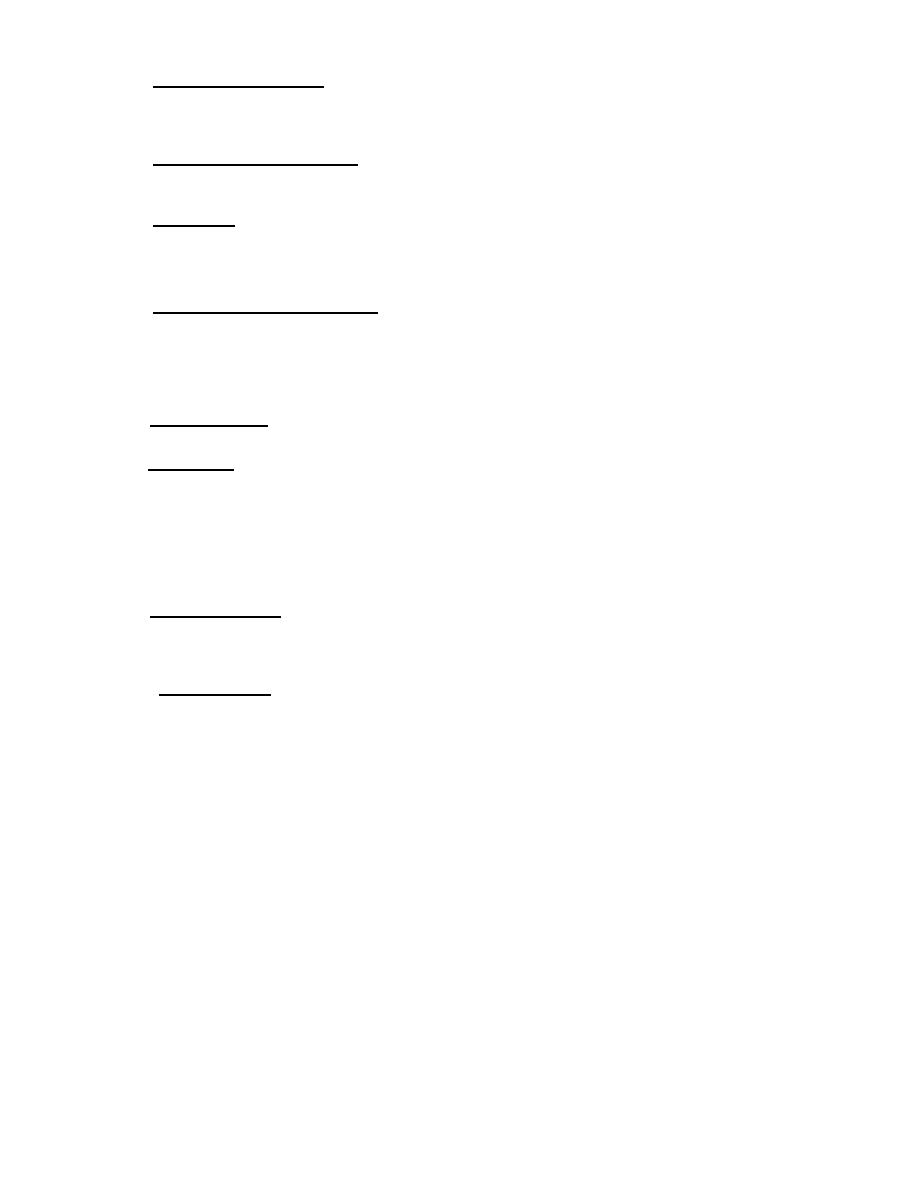
| Tweet |

Custom Search
|
|

|
||
 TM 55-1905-223-10
a. Reverse Reduction Gear. The reverse reduction gear reduces the engine output revolutions per
minute (RPM) and reverses rotational direction to the propeller shaft. Direction of rotation and clutch operation
are controlled by each engine's throttle control on the ERC or PHC. Power is transmitted by disk clutches and
pinion gears.
b. Lubricating Oil Cooling Pump. The reverse reduction gear lubricating oil cooling pump cools the
reduction gear cooling oil via water drawn from the keel cooler. The pump is activated by a switch on the
engine control panel.
c. Shaft Brake. Locks the shaft when the propulsion system is in neutral to prevent the shaft from
turning.
1-18. Bowthruster Power System. The bowthruster power system powers the bowthruster waterjet and the
auxiliary fire pump. The system consists of a diesel engine with a power takeoff (reduction gear) on each end.
a. Engine Instrument Control Panel. The engine control panel contains indicators which monitor the
operational condition of the engine, power takeoff, and battery voltage. Conditions monitored by the control
panel are: engine oil pressure, engine RPM, engine cooling water temperature, gear (power takeoff) oil
pressure, battery voltage, and engine exhaust temperature by bank. Engine oil pressure, engine jacket water
temperature, and an engine running indicator are also monitored by the machinery plant monitoring system on
the PHC panel. The engine may be started at either the control panel or the PHC.
b. Electrical System. Electrical power to the engine is 24 Vdc from the external batteries located in the
bowthruster compartment, supplying power to instrument and control panel, starter motor, and solenoid.
c. Fuel System. The fuel system is a pressure time (PT) type consisting of the fuel pump, supply lines,
drain lines, fuel passages, and injectors. The fuel pump, containing a governor, is driven by the front engine
gear train. Filtered fuel is supplied to the injectors via the fuel manifold and cylinder head drillings. Timing is
provided by a camshaft through can rollers and push-tubes to injector rockers which actuate the injectors at the
proper time. The governor maintains the speed of the engine at a setting determined by the engine operator.
An automatic shutdown feature, which is controlled from the machinery plant monitoring system, will energize a
shutdown solenoid, cutting off fuel flow to the engine. This solenoid also contains a plunger for manual
shutdown. The fuel system receives fuel oil from the fuel oil transfer piping system.
d. Lubrication System. The lubrication system provides lubricating oil under pressure by a gear-driven
type oil pump mounted to the block and driven by the front gear train. The engine receives lubricating oil from
and returns oil to the engine sump. Lubricating oil is supplied to the engine sump from the external lubricating
oil tank via the lube oil transfer and dirty oil discharge piping system.
e. Cooling System. The cooling system removes heat created by the engine and its support
components. Cooling water is circulated by a belt-driven centrifugal water pump through the engine block and
cylinder heads and the heat exchanger, with a portion going through the lubricating oil cooler. Seawater is
piped through the heat exchanger to cool the cooling water. The cooling system receives fresh water from the
fresh water cooling piping system.
1-99
|
||
 |
||